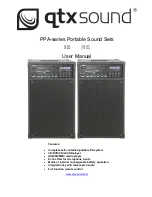
11
RAID 30
Striping over the member RAID 3 volumes. RAID 30 needs at
least six hard drives.
RAID 50
Striping over the member RAID 5 volumes. RAID 50 needs at
least six hard drives.
RAID 60
Striping over the member RAID 6 volumes. RAID 60 needs at
least eight hard drives.
JBOD
The abbreviation of “Just a Bunch Of Disks”. JBOD needs at
least one hard drive.
1.2.3
Volume relationship
The below graphic describes the relationship of RAID components. One RG (RAID group)
consists of a set of VDs (Virtual Disk) and owns one RAID level attribute. Each RG can be
divided into several VDs. The VDs in one RG share the same RAID level, but may have
different volume capacity. All VDs share the CV (Cache Volume) to execute the data
transaction. LUN (Logical Unit Number) is an unique identifier, in which users can access
through SCSI commands.
Figure 1.2.3.1
1.3
iSCSI concepts
iSCSI (Internet SCSI) is a protocol which encapsulates SCSI (Small Computer System
Interface) commands and data in TCP/IP packets for linking storage devices with servers
over common IP infrastructures. iSCSI provides high performance SANs over standard IP
networks like LAN, WAN or the Internet.
RG
PD 2
PD 3
DS
PD 1
VD 1
VD 2
Snapshot
VD
RAM
Cache Volume
+
LUN 1
LUN 2
LUN 3
+
+












































